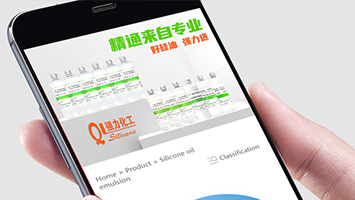In the field of silicone materials, an organosilicon linear body (commonly referred to as a "linear silicone polymer" or "silicone linear body") refers to a silicone polymer with a linear chain structure. Its main chain consists of repeating silicon-oxygen bonds (-Si-O-Si-), with organic groups (such as methyl, ethyl, phenyl, etc.) attached to the silicon atoms. The molecular chain has no cross-linking or minimal branching, forming a straight-chain structure.
I. Structural Characteristics
The general molecular formula of an organosilicon linear body can be represented as:
R₃SiO-(SiR₂O)ₙ-SiR₃
Where:
R₃SiO-(SiR₂O)ₙ-SiR₃
Where:
- R represents organic groups (most commonly methyl, -CH₃, in which case it is called a "dimethylsiloxane linear body");
- n is the degree of polymerization, determining the molecular chain length and molecular weight;
- The main chain consists of repeating -Si-O- units (siloxane bonds), which impart high temperature resistance, aging resistance, etc.;
- The linear structure allows the molecular chain to rotate and stretch freely without three-dimensional cross-linking.
II. Common Types and Applications
-
Oligomeric Linear Bodies (Small Molecules)
- Examples include dimethylsiloxane oligomers (such as hexamethyldisiloxane or linear bodies formed by ring-opening polymerization of octamethylcyclotetrasiloxane), which have low molecular weights and viscosities (from a few centipoise to a few hundred centipoise).
- Applications: Raw materials for synthesizing high polymers, base components for silicone oils, smoothing agents in cosmetics, etc.
-
High-Polymer Linear Bodies (Large Molecules)
- Examples include linear polydimethylsiloxane (PDMS), which has a high molecular weight and high viscosity (from thousands to hundreds of thousands of centipoise), forming the main structure of common "silicone oils".
- Applications: Used directly as silicone oils (e.g., lubricants, mold release agents, softeners), or as base materials for preparing silicone rubbers and silicone resins through cross-linking reactions.
III. Differences from Other Silicones
- Difference from Cyclic Silicones: Cyclic silicones (e.g., cyclosiloxanes) form ring structures by connecting the ends of the molecular chain (e.g., D4, D5), while linear bodies are chain-like without cyclic closure.
- Difference from Cross-Linked Silicones: Cross-linked silicones (e.g., cured silicone rubber) form three-dimensional network structures where molecular chains cannot move freely; linear bodies are uncross-linked chain structures with fluidity or plasticity.
IV. Core Properties
Based on the linear structure and siloxane bond characteristics, organosilicon linear bodies exhibit:
- Good fluidity and processability (can be melted or dissolved);
- Excellent resistance to high and low temperatures (-50°C to over 200°C);
- Low surface tension, hydrophobicity, and lubricity;
- High chemical stability (resistant to oxidation, acids, and bases).
In summary, organosilicon linear bodies are one of the fundamental forms of silicone materials and key raw materials for synthesizing silicone oils, silicone rubbers, etc. They are widely used in industries such as chemicals, daily care, textiles, and electronics.



